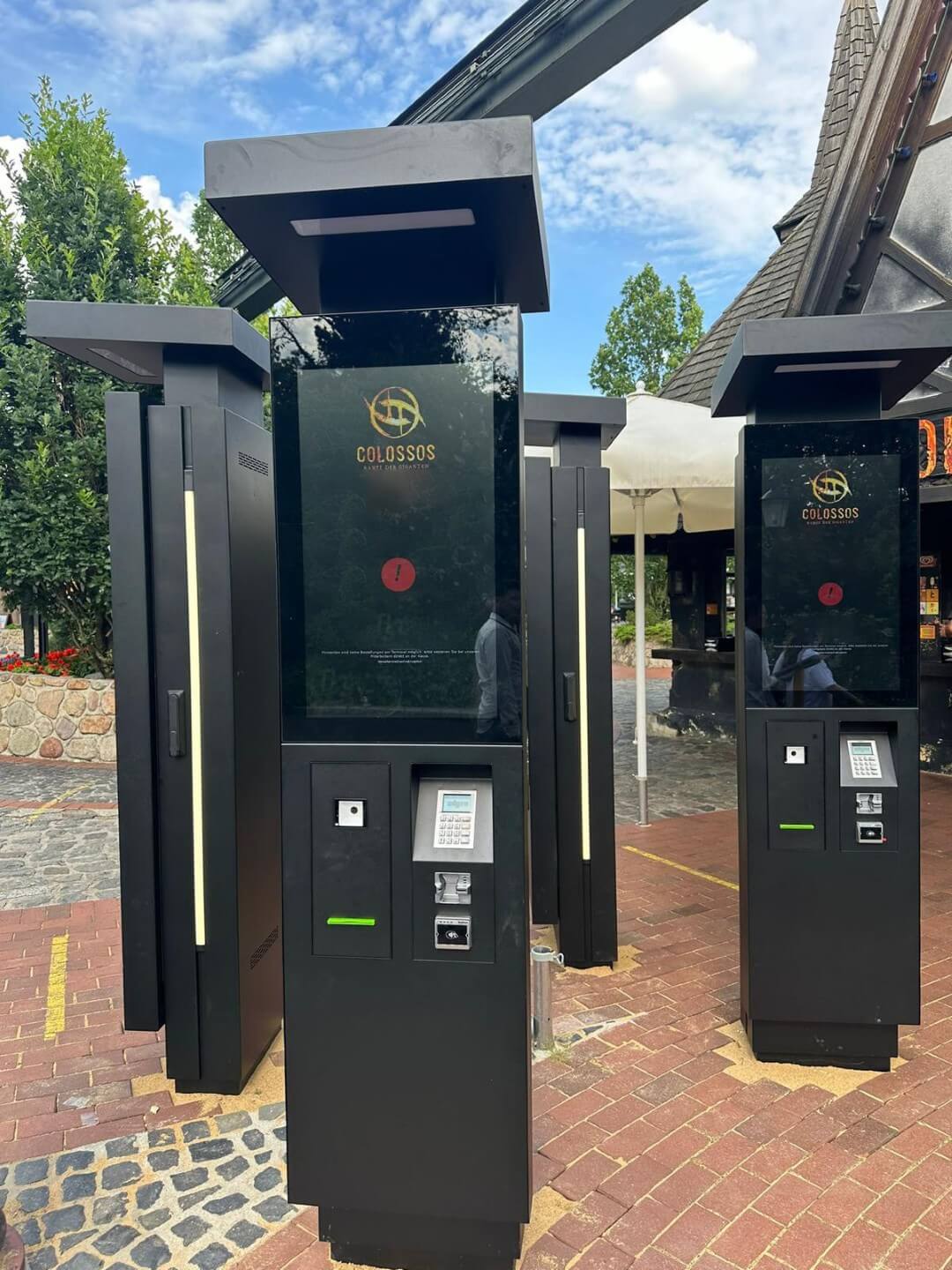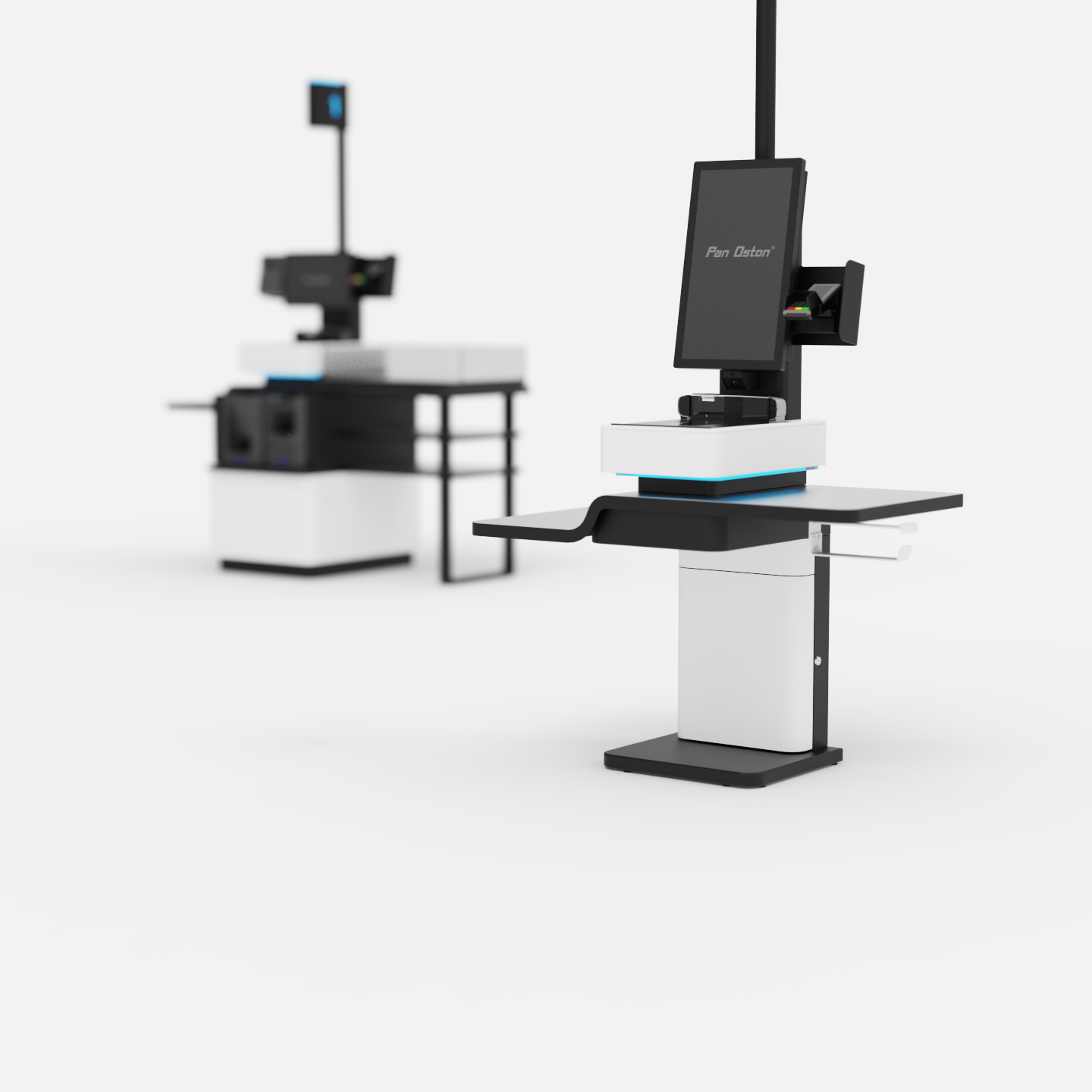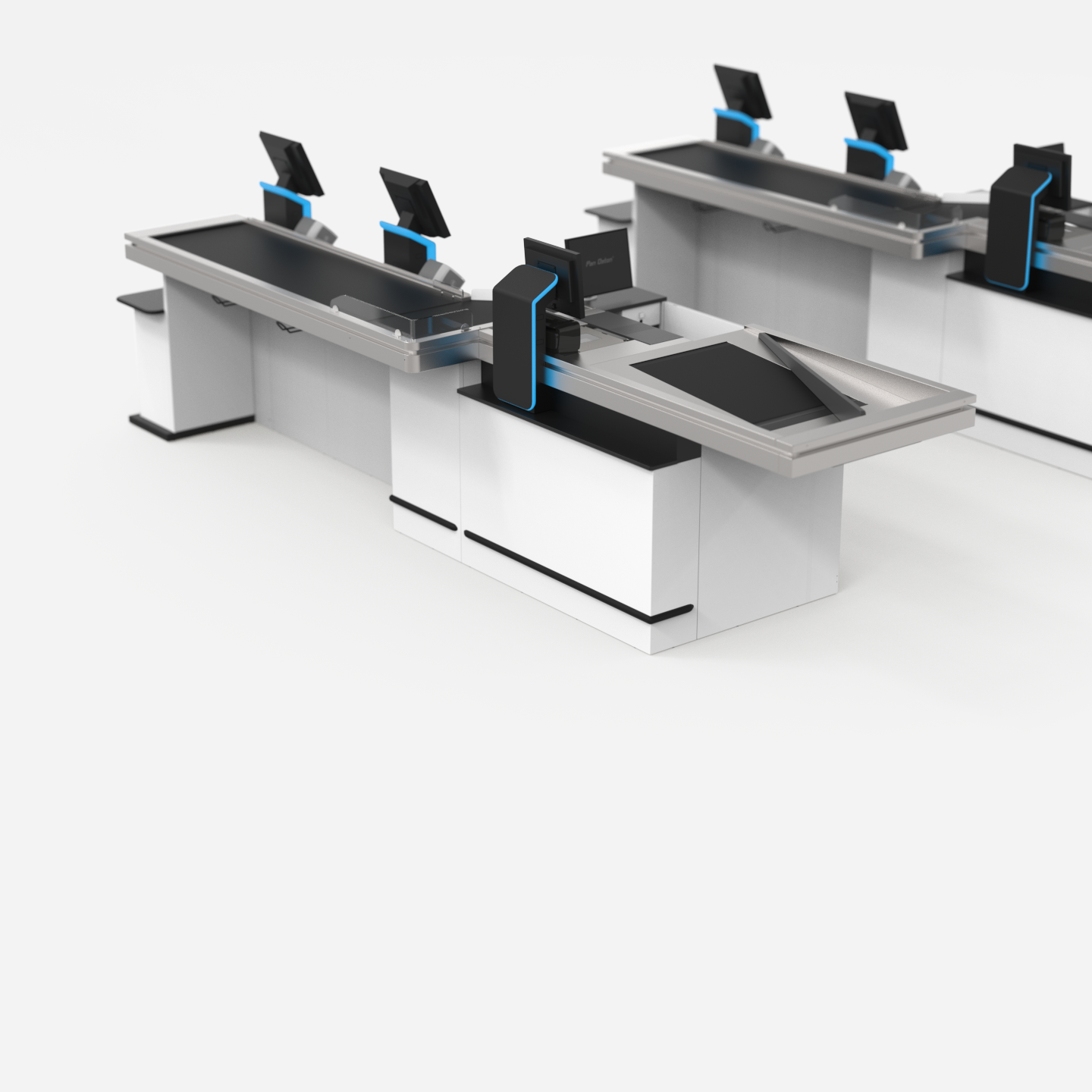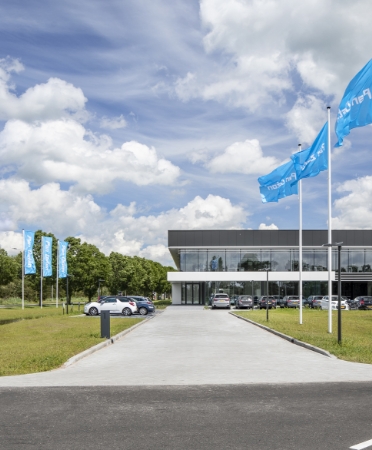Self-service in hospitality: delivering for guests and operators
Margins have always been tight in the hospitality industry. Today, operations continue to be stretched by inflationary cost structures, shifting customer expectations and labour shortages. Thankfully, modern technology offers a path to achieving growth, even in these challenging circumstances. Self-service solutions enable increases in revenue and throughput without increasing staff numbers.
For hotel chains, quick-service restaurants, event organisers and theme parks, self-service solutions, ranging from digital kiosks and self-order terminals to self-check-in systems and vending machines, are delivering measurable returns. When integrated correctly, self-service solutions can resolve operational issues, unlock sales opportunities, and reduce friction for both guests and staff.
A number of questions arise when it comes to making the right choices for profitable, future-proof investments. Where do the commercial advantages lie? What problems does self-service address? What barriers stand in the way? And what should operators plan for to make implementation commercially viable across multiple sites?
SELF-SERVICE SOLUTIONS: A WORTHWHILE INVESTMENT
Investments in self-service deliver measurable commercial value. For operators focused on increasing revenue, improving throughput, and gaining tighter control over pricing and promotions, these systems are more than a convenience. They are a proven business tool whose gains are visible across a range of metrics.
Increased transaction value
Digital self-ordering consistently leads to higher transaction values. Unlike in-person ordering, customers are more likely to browse the full menu, select extras, and accept upsell prompts. Most operators see average transaction values increase by 15-20%, depending on the sector and the design of the interface. A/B testing can easily show how interfaces can be optimised for maximum order value, transaction speed, etc.
Higher throughput and reduced queue abandonment
Queues are a challenge and a sales barrier in busy hotels, QSR restaurants, snack bars or other venues. Rijen vormen een obstakel in drukke hotels, fastfoodrestaurants of snackbars.
Better staff allocation
The labour market is tight, and good staff are hard to find and retain. Self-service solutions can help deploy staff more effectively. Removing repetitive tasks, such as taking orders off employees' hands, creates space for more complex, varied, and challenging tasks.
Reduce error rates
When customers input their own orders, the level of customisation errors and miscommunications will fall. This leads to a better customer experience, fewer complaints, less food waste, lower rework rates and higher throughput.
Centralised control over content and pricing
Digital menus can be updated instantly across multiple locations, giving operators precise control over pricing, stock-dependent availability, and promotions without relying on in-store teams.
Scalable customer data collection
Self-service transactions produce structured data, which is useful for understanding demand patterns, testing promotions and up- and cross-selling options, or managing product mixes per location. This data is far more accurate than that collected through verbal ordering or cashier input.
.jpg)
RESOLVING OPERATIONAL ISSUES
Beyond commercial gains, self-service also addresses several persistent operational challenges that hospitality operators face daily. From staffing instability to communication inconsistencies across sites, these solutions can reduce friction in both customer interactions and internal workflows.
Labour volatility
High staff turnover, rising wages, and worker shortages across the continent make staffing consistency an ongoing challenge. Self-service reduces dependence on front-of-house staff, especially in entry-level or casual roles.
Staff training and onboarding
Standardising service through digital interfaces reduces the training burden on new hires. This is especially important in multi-site chains, seasonal operations and one-off events.
Language and accessibility
Multi-language support reduces order errors in tourist-heavy locations. Digital interfaces can also more consistently accommodate accessibility needs than human interaction can.
Dealing with peak times
Self-service absorbs peak-time traffic, especially in high-demand locations such as airports, stadiums, and transport hubs. This prevents bottlenecks and queue frustration without requiring space for more counters or checkouts.
Consistency in product communication
Printed menus and verbal descriptions vary by site and team. Self-service allows for accurate and branded menu presentation with visual support and product pairing logic.

ADDRESSING COMMERCIAL CHALLENGES
Self-service technology has reached maturity and offers huge opportunities for customer experience and operational efficiency. Yet the success of an implementation lies not only in the technology itself, but mainly in thoughtful integration, strategic placement and the active involvement of stakeholders. These factors are crucial to overcoming commercial challenges, such as increasing customer acceptance, achieving rapid ROI and preventing disinvestment due to underutilisation.
Fragmented systems architecture
For a successful implementation of self-service without duplication of operations, failures or data loss, the entire chain must be optimally integrated. Self-order terminals should work with existing POS systems, kitchen screens, stock management systems, loyalty programmes and payment providers.
Unclear ownership of the solution
Making the introduction of self-service a success requires shared responsibility between digital, operational, IT and commercial teams. This will prevent it from being viewed as another IT project or local pilot.
Poor placement and location flow
If customers can’t find the kiosk, for instance, if its placement is inconsistent with the natural customer flow, it won’t be used. Testing customer flow and signage in each location is key. Many failures come down to physical layout, not software or hardware performance.
Staff resistance and role confusion
Without clear communication, training, and role updates, teams may see self-service as a threat to their jobs. This leads to low adoption or even active sabotage. Operators need clear messaging, retraining, and revised team structures to absorb the change.
Overemphasis on cost savings
Self-service can reduce labour hours over time, but it should primarily be viewed as a growth tool. Projects focusing only on cost-cutting often miss more important gains in terms of transactional value, throughput, and customer satisfaction.
No pilot structure or feedback loop
Pilots should track more than uptime. Metrics such as average transaction value, conversion rate, queue length, customer feedback, and transaction speed matter. A pilot without structured KPIs will not give an accurate picture of commercial potential.
.jpg)
WHAT THE BEST OPERATORS GET RIGHT
Across the sector, operators who succeed with self-service tend to follow common patterns. They secure the involvement of IT, operations, finance, and marketing to ensure an effective solution and faster scale-up. They focus on lifetime value, integration ability, long-term support, and quality rather than initial hardware costs. They ensure their integration architecture has the flexibility to enable future upgrades, thus avoiding long-term costs and being locked into a single supplier. They invest in an accessible user interface that includes top-notch menu design, multiple languages, smart upsell and cross-sell options, and is proven to increase conversion and average transaction value. They will follow a staged roll-out strategy with tightly focused operational support, training and technical support.
RETURN ON INVESTMENT: WHAT TO MEASURE
A complete view of return goes beyond staff savings. Operators should instead be focused on metrics like the increase in average transaction value (ATV), the reduction of queue length and dwell time, the decrease in order errors and remakes, usage rates per location and time of day, time to train new staff at each site and data availability for procurement, stock planning, and customer behaviour analysis. From observations across several multi-country QSR chains, the first year of full rollout typically shows a rise in average transaction value between 15% and 20%, a drop in staff onboarding time of around 15%, and an increase in weekday peak-hour transactions of up to 35%. None of these gains come from staff reduction.
SELF-SERVICE: A METHOD OF OPERATION
Self-service isn’t a technology trend—it’s a method of operation. When treated as a central part of your business architecture, it supports both revenue growth and staff resilience. For operators managing multiple sites, it offers a scalable way to deliver consistent service, streamline operations, and protect margins.
The opportunity is not in the hardware—it’s in getting the whole system working together, from digital design to floor layout, staff workflows, and customer interaction. Those who treat it as a commercial capability, rather than a kiosk project, are already reaping the rewards.
.jpg)
CURIOUS ABOUT PAN OSTON'S SELF-SERVICE SOLUTIONS?
Thanks to their modular and flexible design, Pan Oston's solutions are suitable for many different self-service concepts in the hospitality sector. Curious about what they can do for you? Our team of specialists is ready to work with you and optimise every customer interaction.


.jpg)

.jpg)